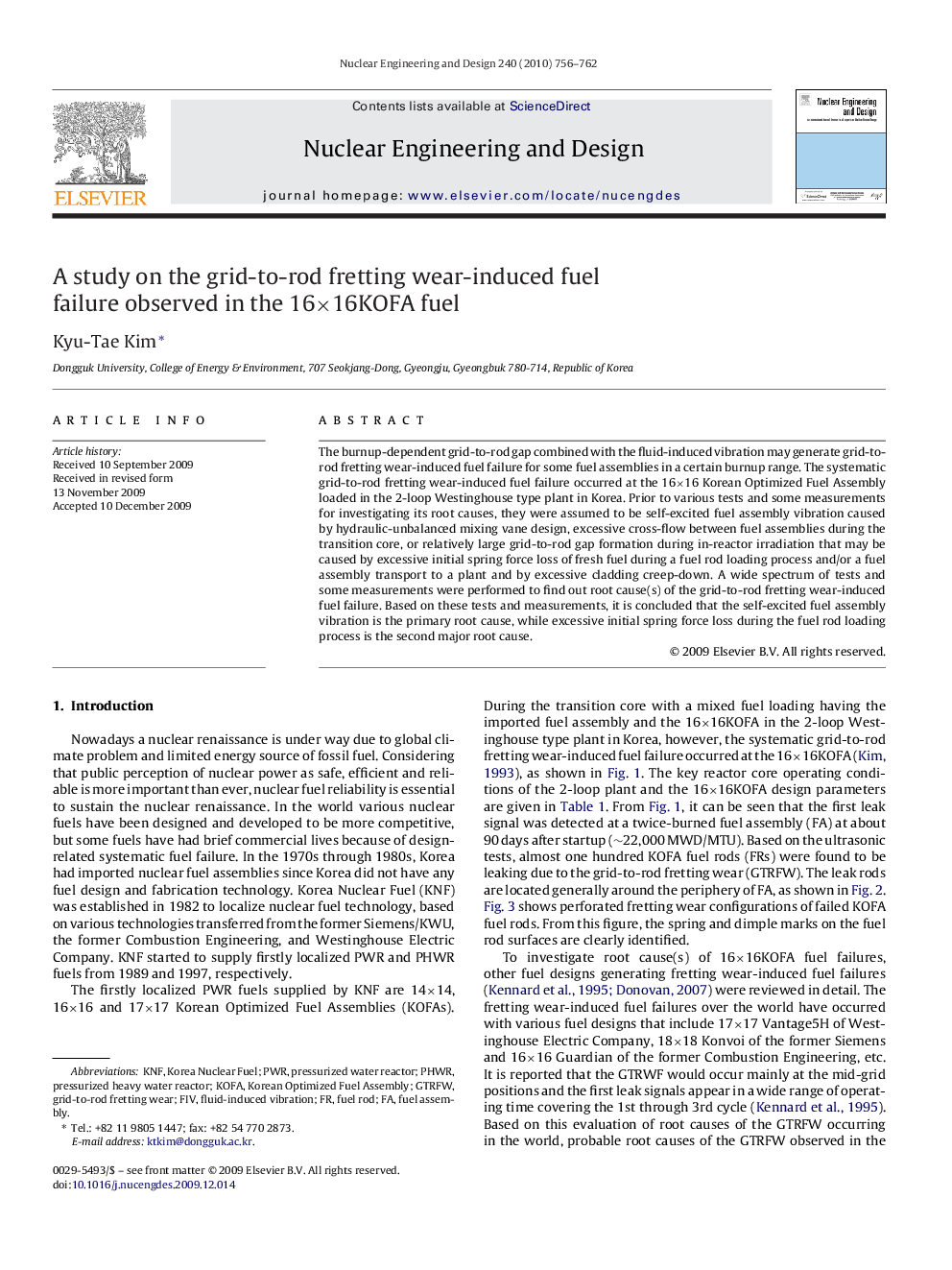| Article ID | Journal | Published Year | Pages | File Type |
|---|---|---|---|---|
| 298060 | Nuclear Engineering and Design | 2010 | 7 Pages |
The burnup-dependent grid-to-rod gap combined with the fluid-induced vibration may generate grid-to-rod fretting wear-induced fuel failure for some fuel assemblies in a certain burnup range. The systematic grid-to-rod fretting wear-induced fuel failure occurred at the 16×16 Korean Optimized Fuel Assembly loaded in the 2-loop Westinghouse type plant in Korea. Prior to various tests and some measurements for investigating its root causes, they were assumed to be self-excited fuel assembly vibration caused by hydraulic-unbalanced mixing vane design, excessive cross-flow between fuel assemblies during the transition core, or relatively large grid-to-rod gap formation during in-reactor irradiation that may be caused by excessive initial spring force loss of fresh fuel during a fuel rod loading process and/or a fuel assembly transport to a plant and by excessive cladding creep-down. A wide spectrum of tests and some measurements were performed to find out root cause(s) of the grid-to-rod fretting wear-induced fuel failure. Based on these tests and measurements, it is concluded that the self-excited fuel assembly vibration is the primary root cause, while excessive initial spring force loss during the fuel rod loading process is the second major root cause.
